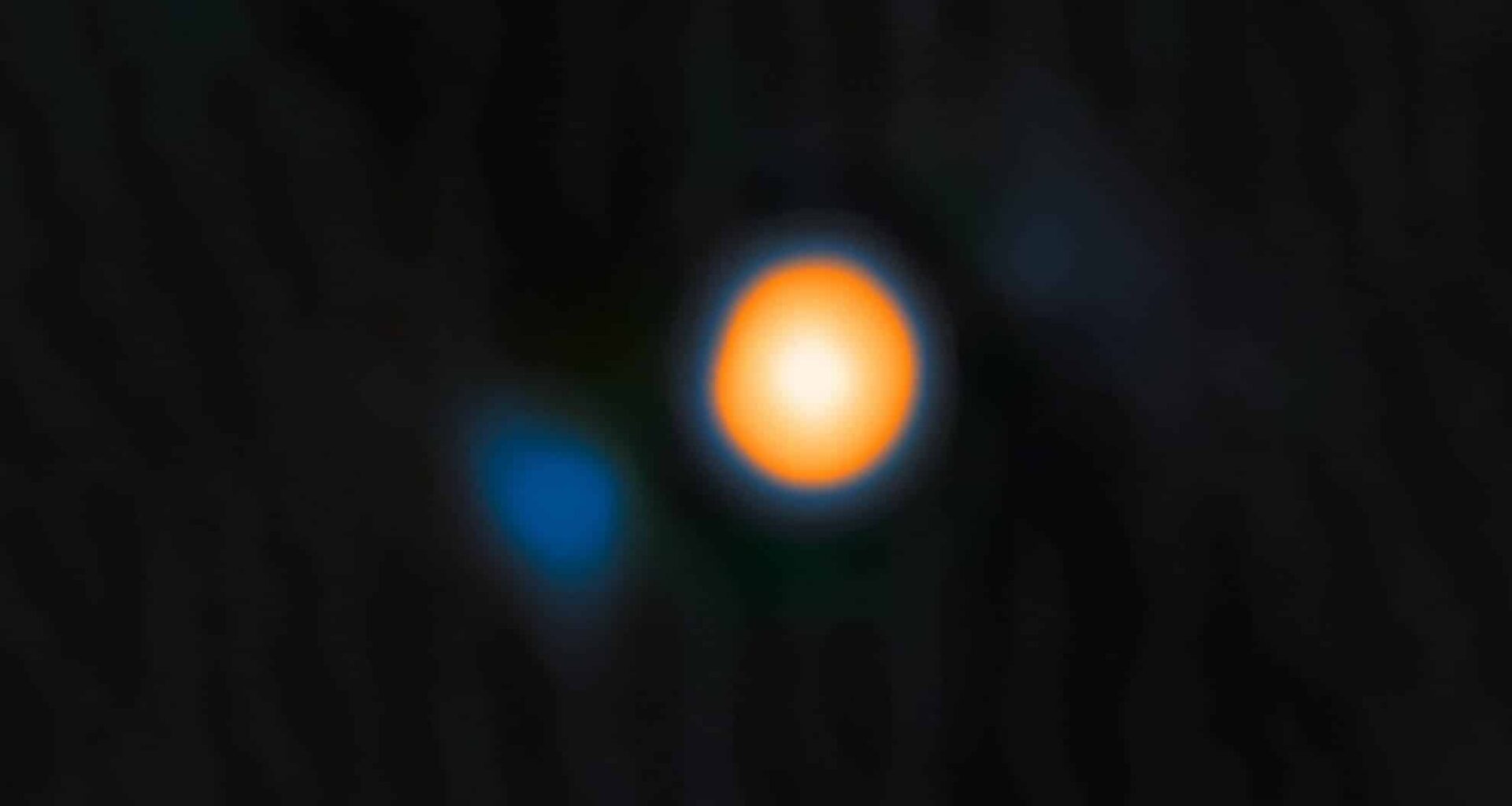Using the Gemini North telescope in Hawai‘i, NASA scientists have directly imaged the faint partner, confirming what astronomers have long suspected but never proven—until now.
The discovery provides a definitive explanation for Betelgeuse’s unusual light fluctuations, which have puzzled scientists for decades. This finding also sheds new light on the behavior of red supergiants and their complex environments, potentially altering how astronomers study massive stars nearing the end of their life cycle.
Betelgeuse is the brightest red supergiant visible from Earth and among the nearest. Its periodic dimming and brightening cycles sparked theories ranging from giant convection cells to enormous clouds of dust forming and dissipating around the star. But those explanations failed to fully account for the observed patterns. Now, with direct imaging of its companion, the focus shifts toward gravitational dynamics within a close binary system—a development with far-reaching implications.
Implications for Future Missions
The breakthrough came thanks to the ‘Alopeke speckle imaging camera on the Gemini North telescope. According to NASA Ames scientist Steve B. Howell, whose team made the discovery, “‘Gemini North’s ability to obtain high angular resolutions and sharp contrasts allowed the companion of Betelgeuse to be directly detected.’” Thousands of short-exposure images were combined to remove atmospheric distortion, revealing a small, faint point of light hugging the swollen edge of Betelgeuse’s disc.
This point of light lies just 8.5 astronomical units away—around 790 million miles—and appears to be an A-type star roughly 1.5 times the mass of our Sun. It is six magnitudes dimmer than Betelgeuse and has been virtually invisible until now, eluding previous searches even by space telescopes like Hubble and Chandra. The companion’s position—often eclipsed by or aligned with Betelgeuse—meant that most observation windows missed it entirely. The next opportunity to observe a wider separation won’t come until late 2027.
 A 2020 image from the Heliospheric Imager aboard NASA’s STEREO spacecraft shows the star Betelgeuse, circled – © NASA/STEREO/HI
A 2020 image from the Heliospheric Imager aboard NASA’s STEREO spacecraft shows the star Betelgeuse, circled – © NASA/STEREO/HI
Signs Hidden in Plain Sight
Before the direct imaging, astronomers had collected indirect evidence of a hidden partner. Betelgeuse’s light curve features a mysterious secondary rhythm—a 5.78-year cycle—layered over its known 400-day pulsations. For years, scientists debated whether this was due to convection, rotation, or some other stellar process. But according to Earth.com, the new discovery “builds on earlier work linking century-long radial velocity curves that cycle to orbital motion,” offering a binary explanation.
As the smaller star orbits, it appears to sculpt spiral structures in Betelgeuse’s extended atmosphere. These features, likely caused by tidal interactions, cool enough for dust to form. That dust veils part of the photosphere, causing the supergiant’s light to dip by nearly 0.07 magnitudes. When the companion re-emerges, the star brightens again. The effect is subtle, yet it aligns closely with historical brightness data that previously lacked a physical explanation.
A Slow Dance Toward Detonation
Betelgeuse and its newly confirmed partner orbit one another every 2,110 days—roughly 5.8 years—at an inclination of about 98 degrees, nearly edge-on from Earth’s perspective. The mass ratio between the stars is extreme, around 18 to 1, leading to significant tidal influence on Betelgeuse’s massive convective envelope. According to NASA, this interaction has likely spun the red supergiant into a slow 36-year rotational cycle, a rare configuration among similar stars.
The close proximity of the two stars—just 2.3 times Betelgeuse’s own radius—puts the companion deep inside a region of molecular gas. Hot material streams around the smaller star at about ten miles per second, possibly fueling a weak accretion glow that is invisible to current X-ray observatories. While that faint signal remains out of reach, future instruments may be able to detect it, providing more insight into the final stages of massive stellar evolution.
Astronomers are now preparing for a multi-year observation campaign to track the binary system’s evolution. Instruments ranging from speckle imagers to ultraviolet satellites will watch for shifts in dust formation, spectral changes, and any early signs of what could be one of the brightest supernovae our sky has seen in modern times.

